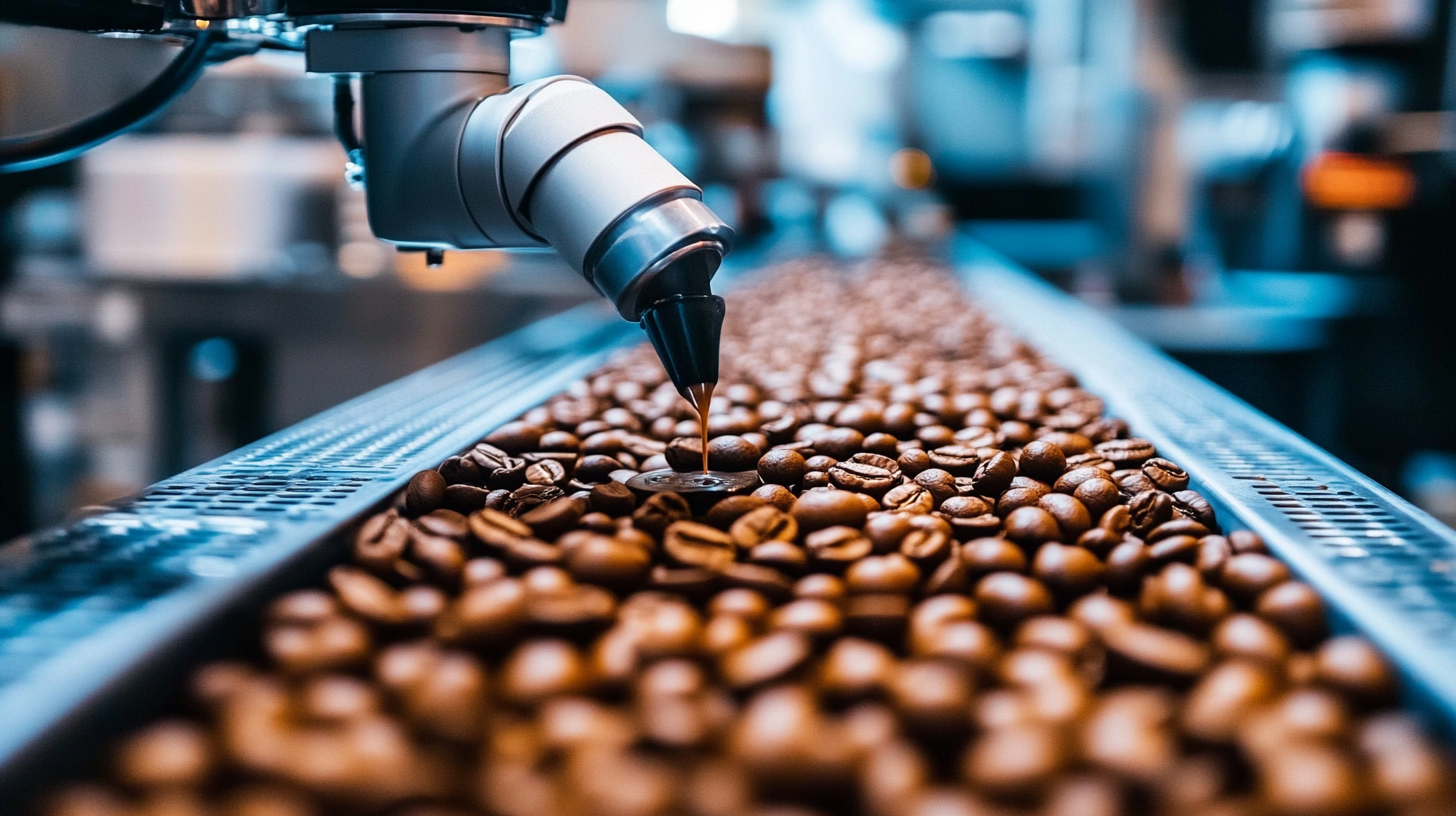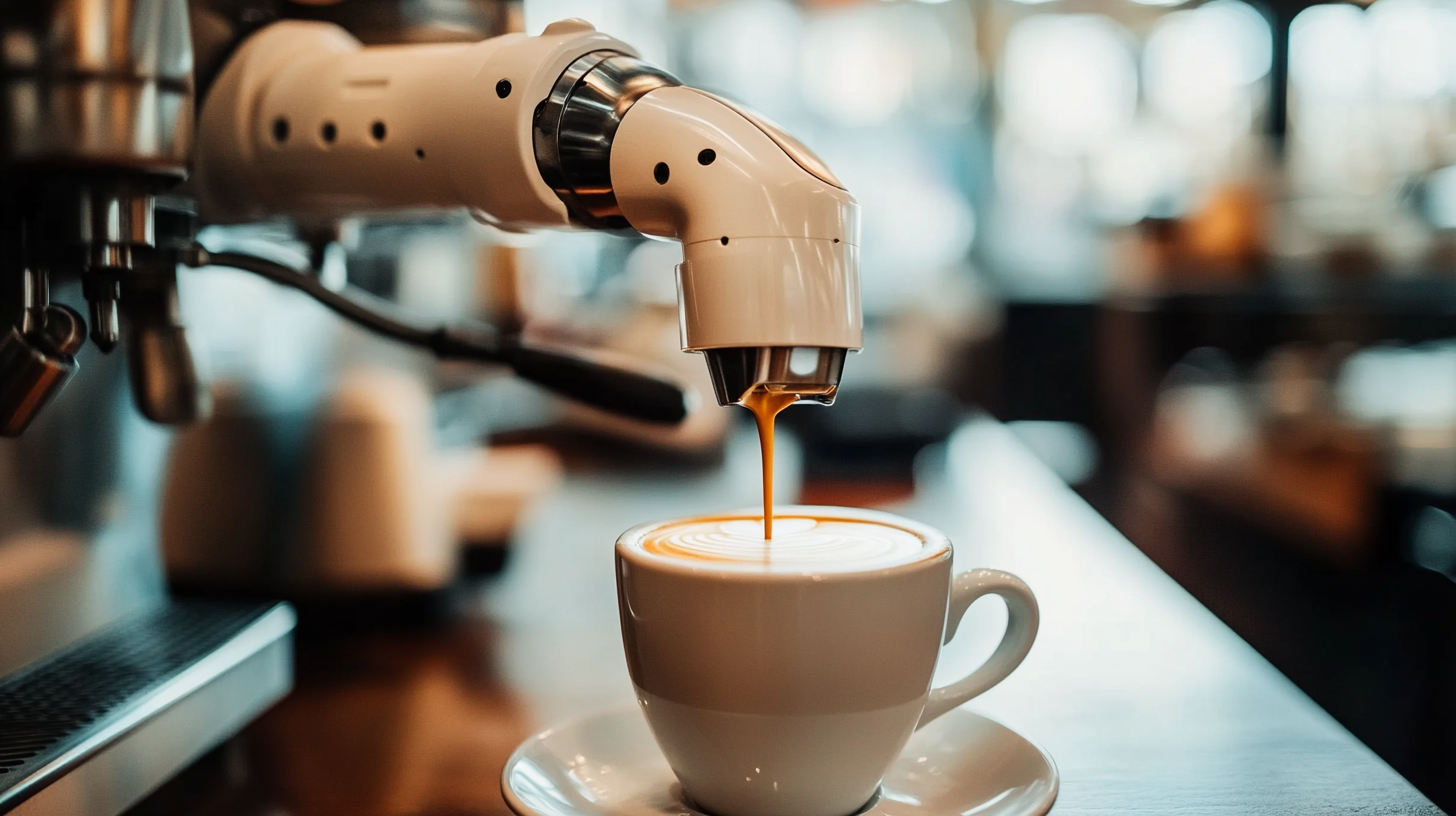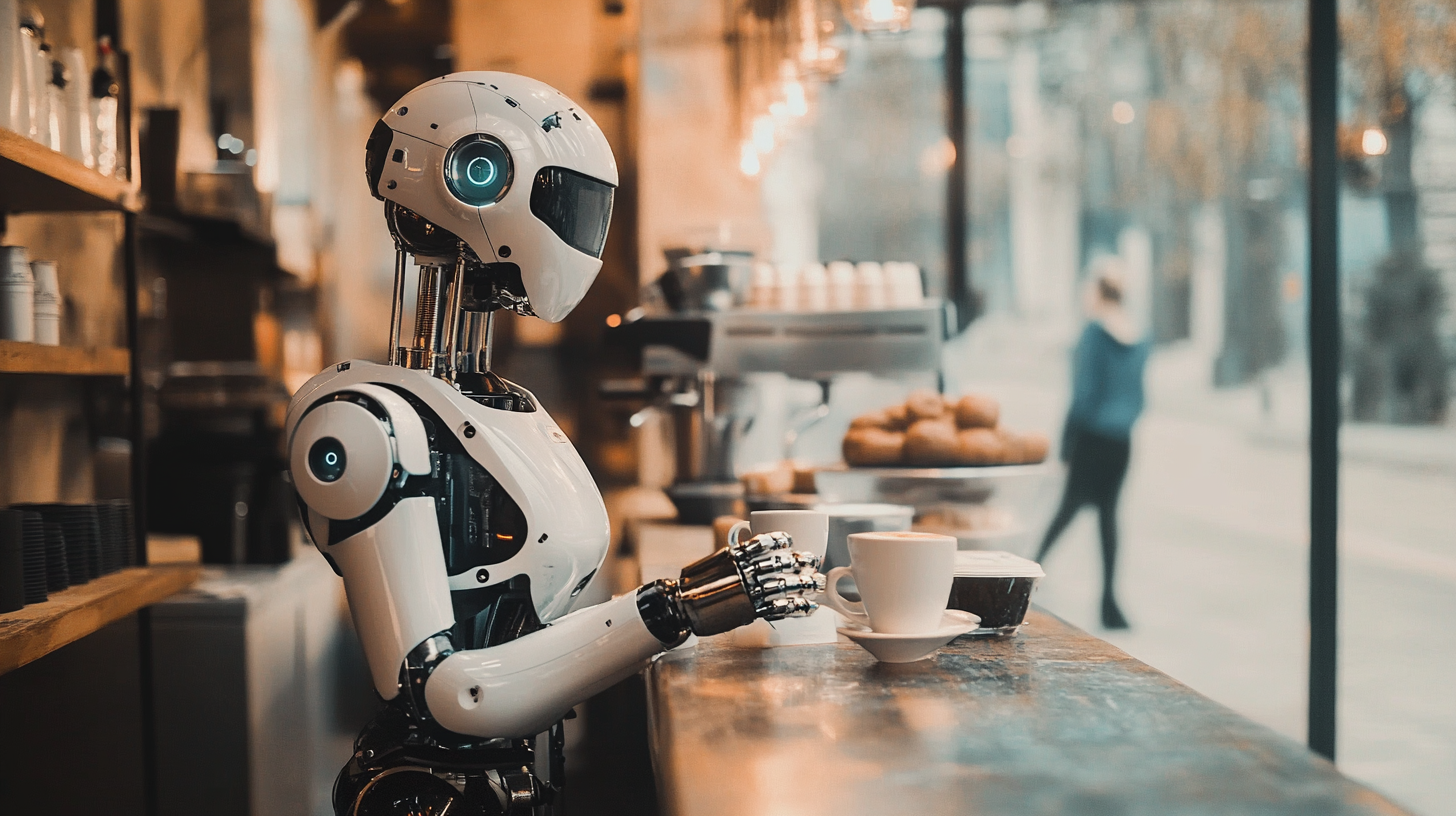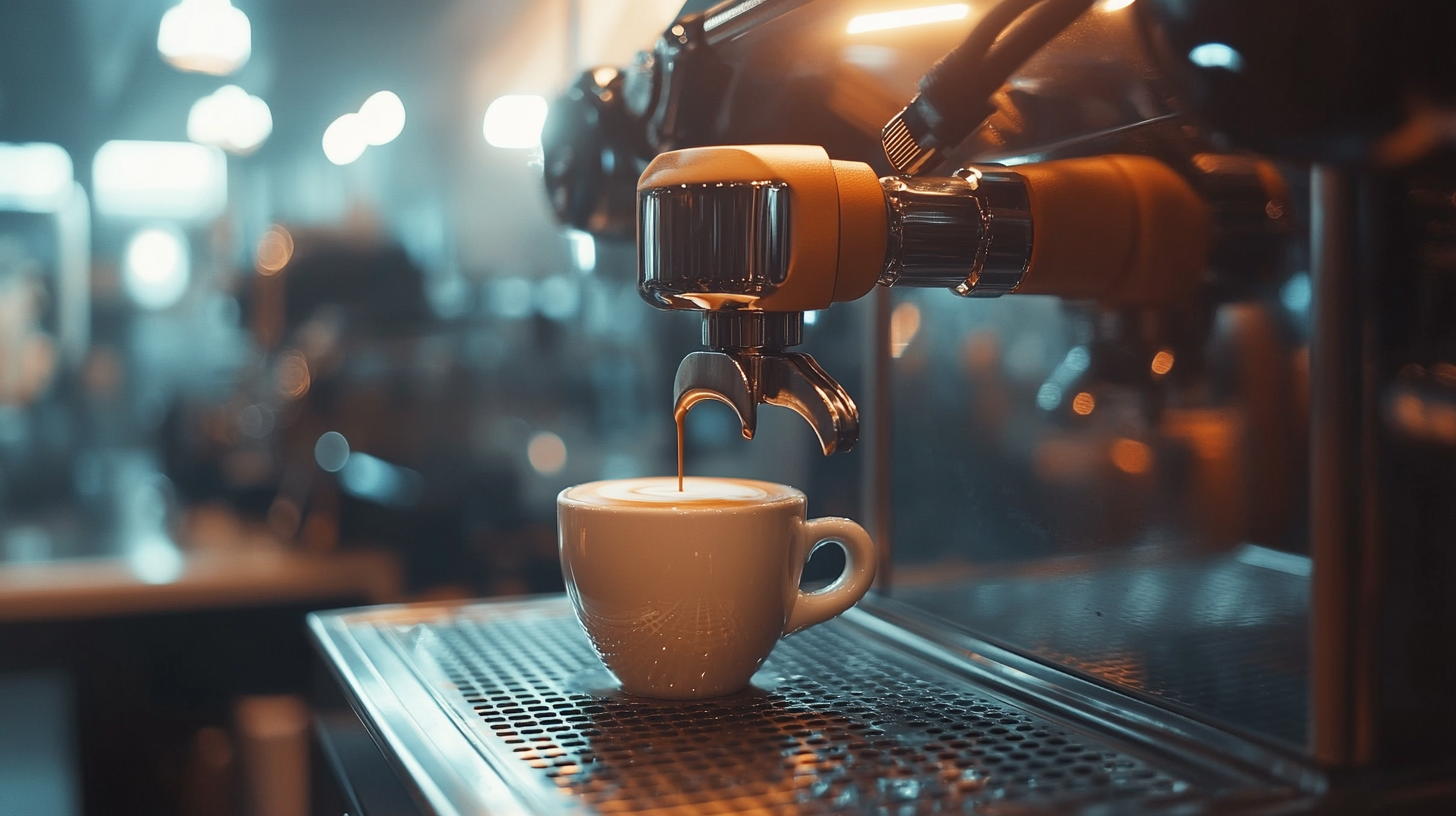2025 Coffee Market Trends: How the Cafe Latte Robot Revolutionizes Global Supply Chains
The coffee market is undergoing a significant transformation, with the rise of automation and technology reshaping the way we experience our favorite brews. According to a report by the International Coffee Organization, the global coffee consumption is projected to reach 200 million 60-kilogram bags by 2025, fueled by an increasing demand for specialty coffee. In this evolving landscape, the Cafe Latte Robot is poised to revolutionize the way cafes and coffee shops operate, streamlining production processes and enhancing customer experience.
As the global coffee supply chain faces rising labor costs and operational challenges, innovations like the Cafe Latte Robot are not just a luxury; they're becoming essential. A McKinsey report highlights that automation in food and beverage services can reduce costs by up to 30% and improve efficiency significantly. By integrating such technology, cafes can not only meet the growing demand for high-quality beverages but also navigate supply chain complexities with agility. This blog explores the trends shaping the coffee market in 2025 and how the Cafe Latte Robot is redefining the future of coffee delivery.

Impact of Automation on Coffee Production Efficiency in 2025
In the evolving coffee market of 2025, the impact of automation on production efficiency is becoming increasingly significant. As cafés and coffee shops strive to meet the rising demand for quality coffee while managing costs, the integration of advanced technology, such as automated latte-making robots, is transforming traditional workflows. This shift not only enhances consistency in flavor and presentation but also streamlines supply chain operations, ensuring that coffee can be produced and delivered more rapidly than ever before. Recent innovations, including the commercial launch of fully automated coffee machines like the "Smart X" by CAYE, underscore this trend. With substantial funding supporting the development of such technologies, businesses are now equipped to automate their processes, minimizing labor costs and reducing human error. As a result, companies can allocate resources more effectively, focusing on high-quality coffee production rather than repetitive manual tasks. However, the benefits of automation extend beyond just efficiency and cost savings. Enhanced production capabilities drive competition within the market, as brands strive to innovate and offer unique coffee experiences. The race to optimize the global supply chain through automation is not only reshaping production strategies but also setting new standards for quality, thereby redefining consumer expectations in the coffee industry. The future of coffee consumption will likely be shaped by these advancements, creating an exciting landscape filled with opportunities for both producers and consumers alike.

Shifts in Consumer Preferences: The Rise of Specialty Cafe Lattes
The rise of specialty café lattes reflects a significant shift in consumer preferences, signaling a growing demand for unique coffee experiences that go beyond traditional offerings. Consumers today are increasingly seeking out high-quality ingredients, innovative flavors, and artisanal preparation methods. This desire for personalization in coffee drinks has prompted cafés to adopt a more creative and experimental approach, featuring unique combinations of syrups, spices, and garnishes that cater to diverse taste profiles.
As specialty café lattes gain popularity, the coffee industry is witnessing a transformation in its supply chains. Roasters and suppliers are focusing on sourcing premium coffee beans that highlight distinct regional characteristics, often promoting single-origin offerings. This not only enhances the flavor profiles of the lattes but also allows cafés to tell a story behind each cup, connecting customers with the growers and the origins of their coffee. Moreover, the emphasis on sustainability is leading to a growing preference for ethically sourced and organic ingredients, encouraging cafés to seek transparency in their supply chains.
The integration of technology, particularly through innovations like coffee-making robots, is further revolutionizing the specialty café latte market. These robots ensure consistent quality while reducing labor costs, allowing baristas to focus on crafting unique drinks and engaging with customers. As a result, the café experience becomes more efficient and personalized, aligning perfectly with the changing preferences of today’s coffee enthusiasts. By embracing these shifts, cafés are not only satisfying consumer cravings but also carving out new niches in the competitive coffee market.

Supply Chain Innovations Driven by Cafe Latte Robots
In the rapidly evolving landscape of the coffee market, the rise of cafe latte robots marks a pivotal innovation in global supply chains. These advanced machines are not just enhancing the efficiency of coffee preparation; they are transforming how coffee is produced, distributed, and consumed. By automating the crafting of lattes with precision and speed, these robots ensure consistency in taste and presentation, appealing to a growing customer base that demands quality and convenience.
Supply chains are being redefined as cafes integrate these robots into their operations. The automation of brewing processes reduces labor costs and mitigates challenges related to staffing. This not only enhances productivity but also allows baristas to focus on customer interactions, elevating the overall cafe experience. Additionally, cafe latte robots streamline inventory management by tracking ingredient usage meticulously, reducing waste, and optimizing orders based on real-time demand.
Furthermore, the environmental impact of coffee supply chains is being addressed through the sustainable practices adopted by these robotic systems. Many cafe latte robots are designed with energy-efficient components and utilize locally sourced ingredients, thus minimizing carbon footprints. As consumer preferences lean towards sustainability, the integration of robots in coffee shops not only meets this demand but also showcases a commitment to eco-friendly practices. The fusion of technology and tradition in coffee making is heralding a new era that promises to enhance global supply chains profoundly.

Sustainability in Coffee Sourcing: How Technology is Changing Practices
The coffee industry is undergoing a significant transformation as sustainability takes center stage in sourcing practices. Recent events, such as Luckin Coffee's expedition to Brazil to source high-quality beans under the leadership of 2023 World Barista Champion Boram Um, highlight the industry's commitment to sustainability. This initiative not only focuses on traceability but also sets a benchmark for sourcing practices across global supply chains.
Technological advancements are further enhancing these sustainable practices. For instance, companies are increasingly relying on data analytics and AI to assess supply chain efficiencies and the environmental impact of coffee production. According to a recent report by the International Coffee Organization, sustainable sourcing can increase the supply of high-quality beans by up to 20% while reducing the carbon footprint of coffee production by approximately 30%. This aligns with Nestlé's efforts to deepen sustainable practices as exemplified in their recent product launch in Yunnan, aimed at integrating health-consciousness with environmental responsibility.
As coffee consumption continues to rise globally, estimated to reach 200 million 60-kilogram bags by 2025, the pressure on sustainability will only increase. Brands must adopt innovative practices, such as utilizing specialized technology to monitor and manage resources effectively, ensuring that the coffee industry not only satisfies consumer demands but does so in a manner that is environmentally sound and socially responsible.
Market Forecast: The Future of Global Coffee Consumption Trends
The global coffee market is poised for transformative changes by 2025, driven by advancements in technology and evolving consumer preferences. With the rise of the cafe latte robot, the efficiency and convenience of coffee production and service are set to revolutionize global supply chains. The market for these automated coffee shops is anticipated to grow significantly, benefiting from a segmented consumer base that includes both coffee enthusiasts and casual drinkers.
In tandem with these technological shifts, global coffee consumption trends paint a promising picture. The coffee market is witnessing robust growth, with projections indicating a compound annual growth rate (CAGR) of approximately 6.25% for coffee-related markets through 2033. This growth is reflected not only in traditional coffee beverages but also in a surge in niche markets, including specialty coffees and innovative products like "no-bean coffee," aimed at addressing rising coffee bean prices that have spiked by over 70%.
As consumer behavior adapts to these changes, issues such as loyalty programs and the frequency of visits become paramount, influencing how businesses tailor their offerings. With the integration of self-service kiosks and other technological advancements, the coffee industry is evolving rapidly, signaling a future where convenience and quality meet in consumer coffee experiences. These developments underscore the dynamic nature of global coffee consumption, providing numerous opportunities for brands to innovate and capture market share.